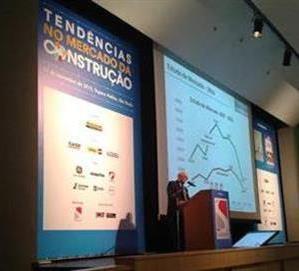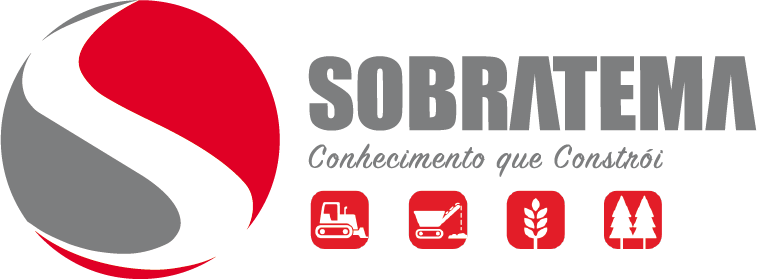Publicado em 25 de novembro de 2015
Sales projections of construction equipment show a reduction of more than 57 percent in 2015
For 2016, the Sobratema Study estimates that the market of machines will decrease 2.1 percent in the quantity of units sold

The deceleration of Brazilian economy started in 2014 with a GDP increase near zero and went to the recession in 2015, that will end with a negative GDP—according to weekly analyses carried out by the Focus Bulletin (of the Central Bank)—that will affect directly the public investments in infrastructure. This is the main factor to ensure the estimated result for the construction equipment market in 2015.
“We believe that—when the problem of the credibility lack of the federal government is solved—a natural retaking of investments in infrastructure will occur, giving impulse to our industry, which is the first to be affected when government investments are reduced and also the first to start to grow when government investments return”, said Eurimilson Daniel, vice-president of Sobratema.
The yellow line (earthmoving equipment) will have a lower reduction of sales: 50.2 percent in 2015, compared to 2014. According to Sobratema Study, equipment with lowest reduction in sales this year are mini-excavators (23.7%) and hydraulic excavators (39.6%). Motor graders will have the highest reduction in sales (86.6%).
The Sobratema Study includes also other equipment used by the industry: tower cranes, mobile cranes, portable air compressors, aerial platforms, telehandlers and wheel tractors. The general decrease of these machines will be higher than that of the yellow line and of the general index: 61.1 percent in comparison to 2014. Aerial platforms will have a significant reduction in their sales: 75.5 percent, but telehandlers will decrease only 2.9 percent.
Other category that contributed for this result in the construction equipment market was the area of standard trucks used in construction, whose reduction is estimated in 64.4 percent for this year.
The year of 2016
Sobratema Study of market also includes projections for the next year. Sales will have a reduction, but in lower levels: 2.1 percent in 2016, compared to 2015. The yellow line will have a sales reduction of 3.7 percent and the category Other equipment will reduce its sales in 1.7 percent.
In spite of the reduction of the general indicators, some families of machines, such as crawler tractors, portable air compressors and cranes may get positive results, an increase of respectively 13.3, 13.6 and 11.1 percent.
The analysis developed by the Sobratema Study of the Brazilian Market of Construction Equipment takes also into account a survey carried out with users and manufacturers of machines. Its results show a perspective of retaking from 2017 on, with a stronger recovery till 2020, when it would be possible to reach the levels of 2010, when the industry growth was of 70 percent.
To make this occur, some factors have to come true along the next years, such as the effectiveness of the adjusting plan of the economy and of new concessions, the solution of the political crisis and the investments for users’ fleet renewal.
The Sobratema Study of the Brazilian Construction Market is issued since 2007. It shows the economic importance of this industry, helps to develop policies that make easy the acquisition of more modern and efficient equipment and is also a very useful instrument of planning for the companies of the area. Data collecting and analysis are carried out by the economic consultation of the pressman and economist Brian Nicholson.

Av. Francisco Matarazzo, 404 Cj. 701/703 Água Branca - CEP 05001-000 São Paulo/SP
Telefone (11) 3662-4159
© Sobratema. A reprodução do conteúdo total ou parcial é autorizada, desde que citada a fonte. Política de privacidade


